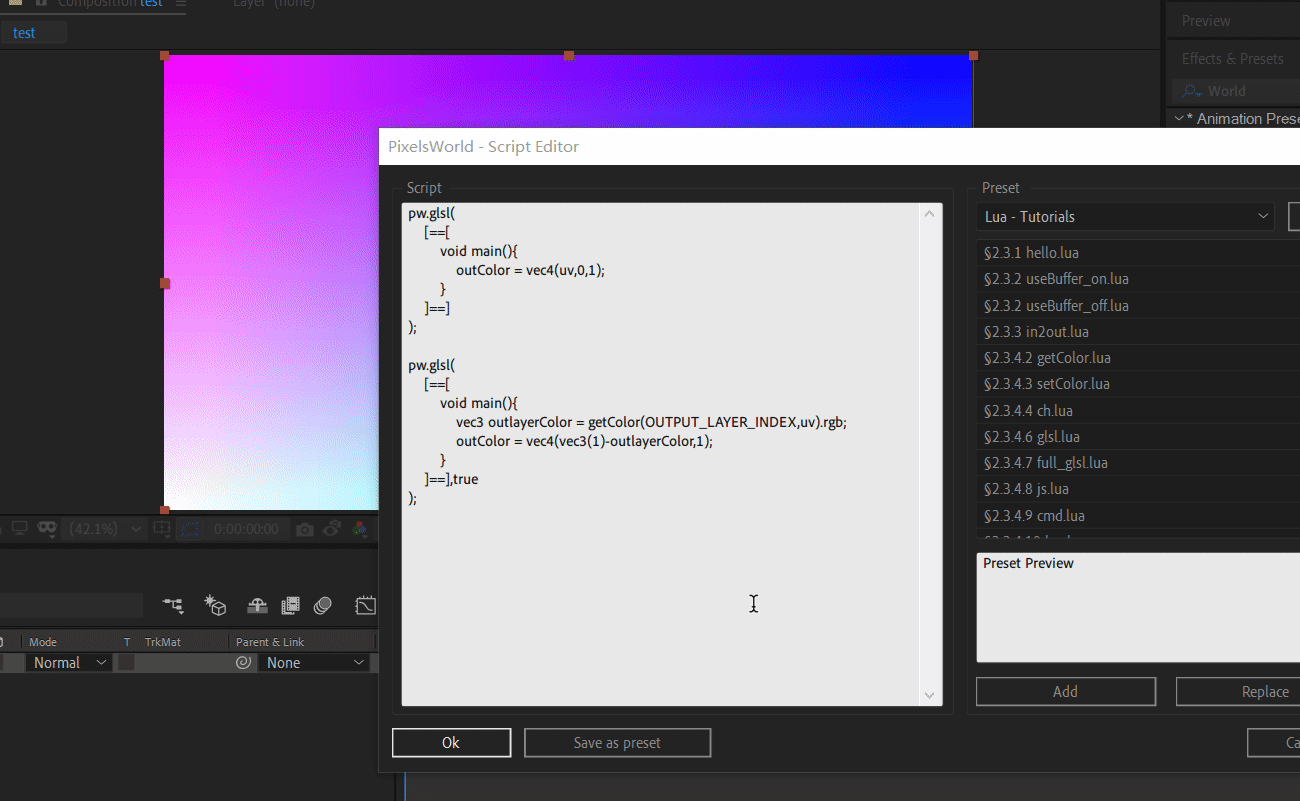Run GLSL in Lua
Usage
pw.glsl(GLSLcode[, useBuffer])
- GLSLcode: string, the source fragment code. If your input code can be run in GLSL Render Mode, it can be directly used in here. (Codes from shadertoy.com is not supported here.)
- useBuffer : bool, optional, by default, this is set to false. If this is true, PixelsWorld will generate a temp memory to store your render result. When the GLSL render done, these data in temp memory will override the output layer's pixels data.
Case you should set useBuffer to true: - You want to re-read pixels from out layer. (Namely, there is
getColor(OUTPUT_LAYER_INDEX,uv)in your glsl code) - You want to make render slow.
If you render glsl only one time each frame, you can totally ignore this option.
Here are some code to describe the useBuffer :
Tips:
Use[==[and]==]to enclose the multi-line code.
useBuffer_on.lua
pw.glsl(
[==[
void main(){
outColor = vec4(uv,0,1);
}
]==]
);
pw.glsl(
[==[
void main(){
vec3 outlayerColor = getColor(OUTPUT_LAYER_INDEX,uv).rgb;
outColor = vec4(vec3(1)-outlayerColor,1);
}
]==],true
);
useBuffer_off.lua
pw.glsl(
[==[
void main(){
outColor = vec4(uv,0,1);
}
]==]
);
pw.glsl(
[==[
void main(){
vec3 outlayerColor = getColor(OUTPUT_LAYER_INDEX,uv).rgb;
outColor = vec4(vec3(1)-outlayerColor,1);
}
]==],false
);
